Slovakia is a country located in Central Europe, bordering countries such as Ukraine, Poland, Hungary, Austria, and the Czech Republic. Tourism in the country is quite developed and the most popular city is Bratislava. Of particular interest is the local nature. Even though there is no access to the sea, the untouched corners of nature are of interest: mountains, parks, fortresses, castles, and natural landscapes.
Kosice
Kosice is the second largest city in the Slovak Republic and an important historical center in the eastern part of this country. In 2013, they were the cultural capital of Europe. Kosice, with a population of about 240,000 people, today proclaims itself a cosmopolitan city where East meets West. It is located on the Gornad River, near the border with Hungary, Ukraine, and Poland. Their original name Kosha meant nothing more than that the Kosh family lived in this settlement. Kosice was located at one of the most important trade crossroads in Europe, so it is not surprising that in the Middle Ages this area was one of the densest in Hungary.
The first mention of Kosice, in the Latin form Villa Kassa, dates back to 1230. Immediately after that, they saw rapid growth. In 1241, the Hungarian king Bela IV granted the rights of the city, because, after the devastating Mongol invasion, he tried to revive this area and attract people from the most remote corners of Saxony. In the 13th century, he became a member of the association of the 24 cities of Spis and Pentapolites, that is, the five most important free royal cities in Upper Hungary.
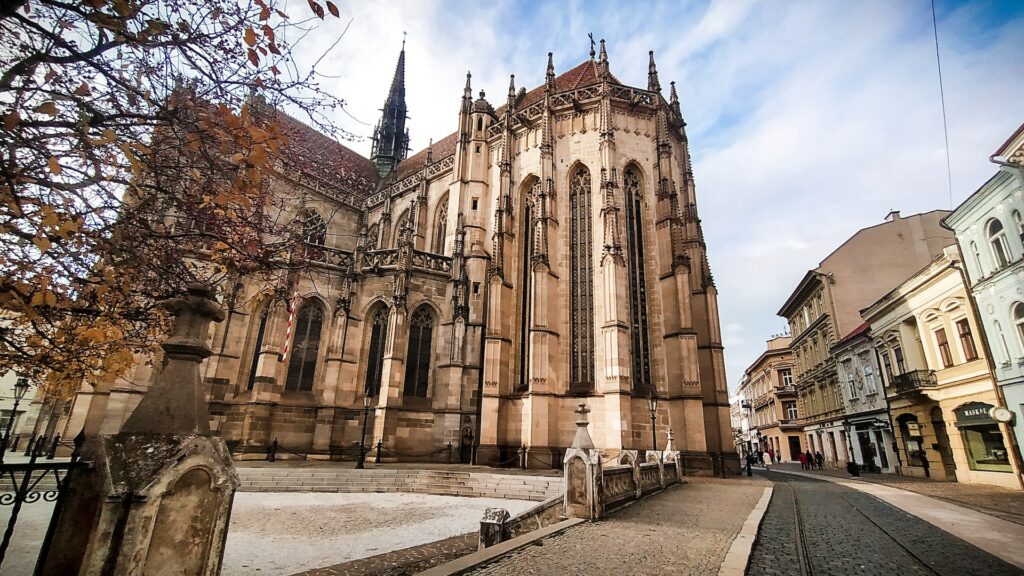
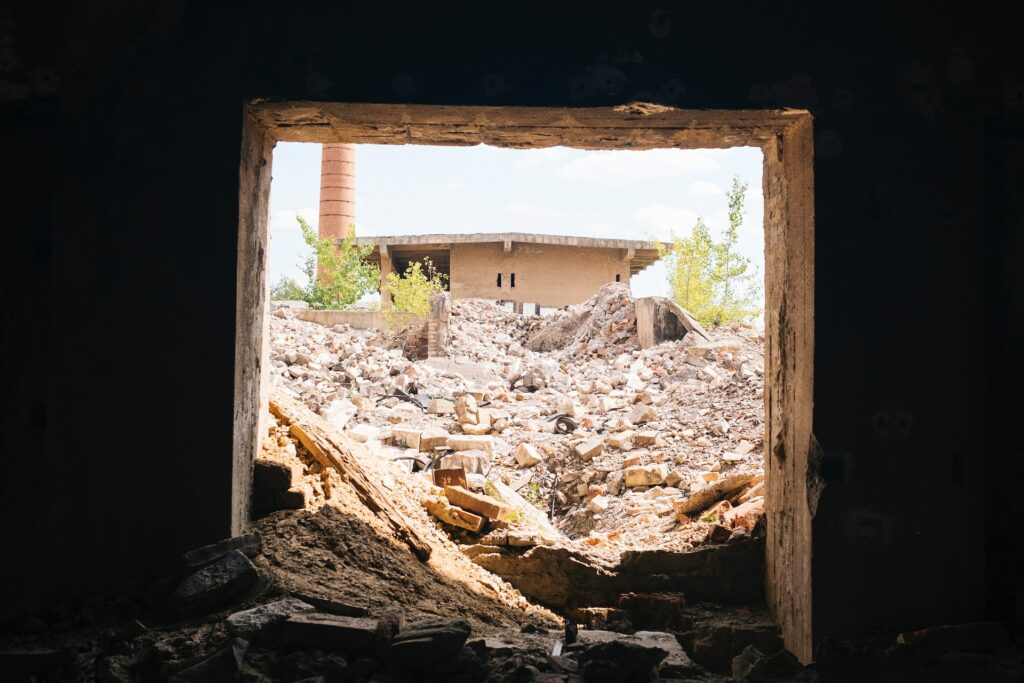
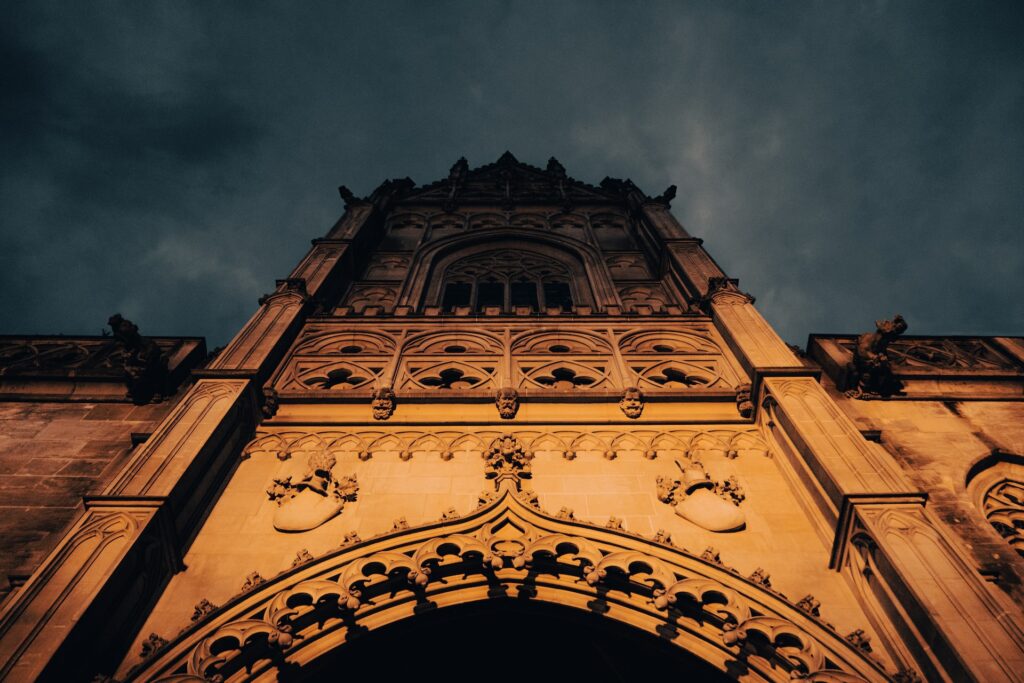
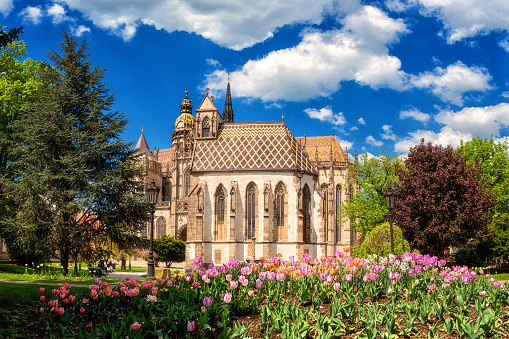
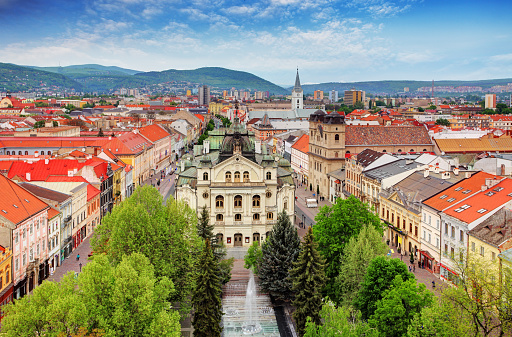
In 1347 Kosice became the second largest city in Hungary after Buda, and this position remained until the beginning of the 18th century. The fact that in 1369 he was the first in Europe to receive the coat of arms of his city proves that it was a really important city. From the history of the 20th century, it is necessary to recall the fact that in 1945 the first post-war Czechoslovak government was formed here and the Kosice government program was approved here.
Today’s Kosice is the center of economic, political, and cultural life with a historical heritage full of aristocratic palaces, artisan houses, and churches scattered around a one-kilometer pedestrian zone and a medieval square, which is the largest protected nature reserve in Slovakia.
Nitra
Nitra, a city with a population of 80,000 people, is located on the river of the same name at the foot of Zobor hill. The dominant feature of the city is the castle, located on a hill near the center of Nitra. The city was the center of the principality of Nitra. This area around the Nitra River has been inhabited continuously for more than thirty thousand years and is therefore a paradise for archaeologists. There were fortifications by the Celts and Germans, and over time the Slavs settled here.
Nitra was founded on seven hills. Prince Pribin built the first Christian church in Slovakia, and the city became an important center of the Principality of Nitra. Prince Rastislav also invited the Thessalonian brothers Constantine and Methodius here. The city of 80,000 inhabitants is dominated by a massive fortress on a limestone hill, surrounded on three sides by a bend of the Nitra River. This is the largest medieval castle in Slovakia, which at the time of its greatest glory occupied an area of up to 8.5 hectares.
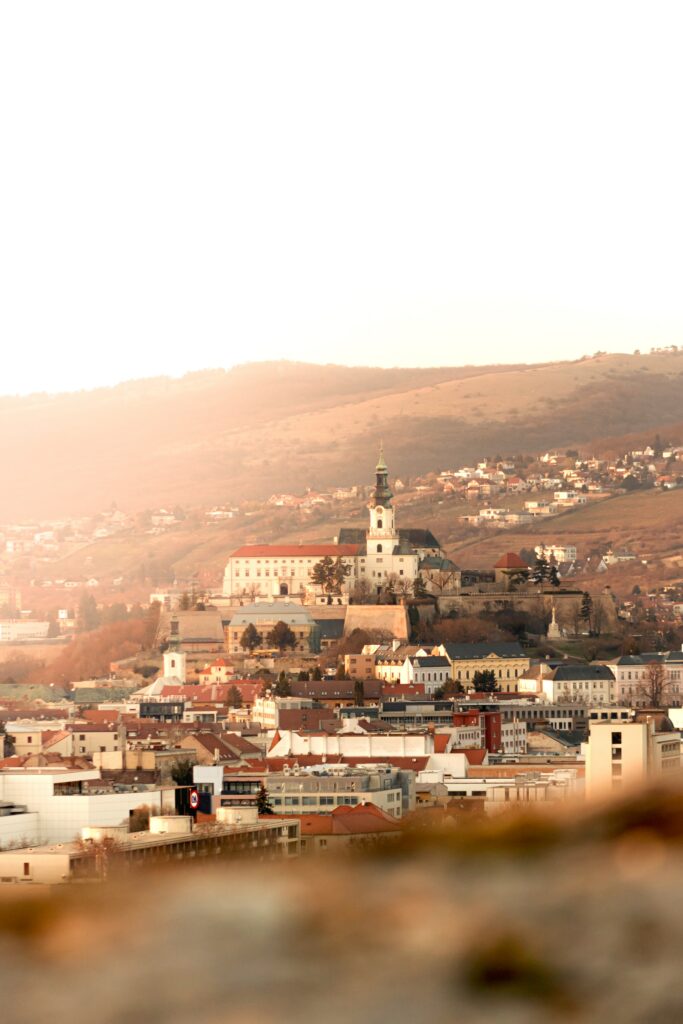
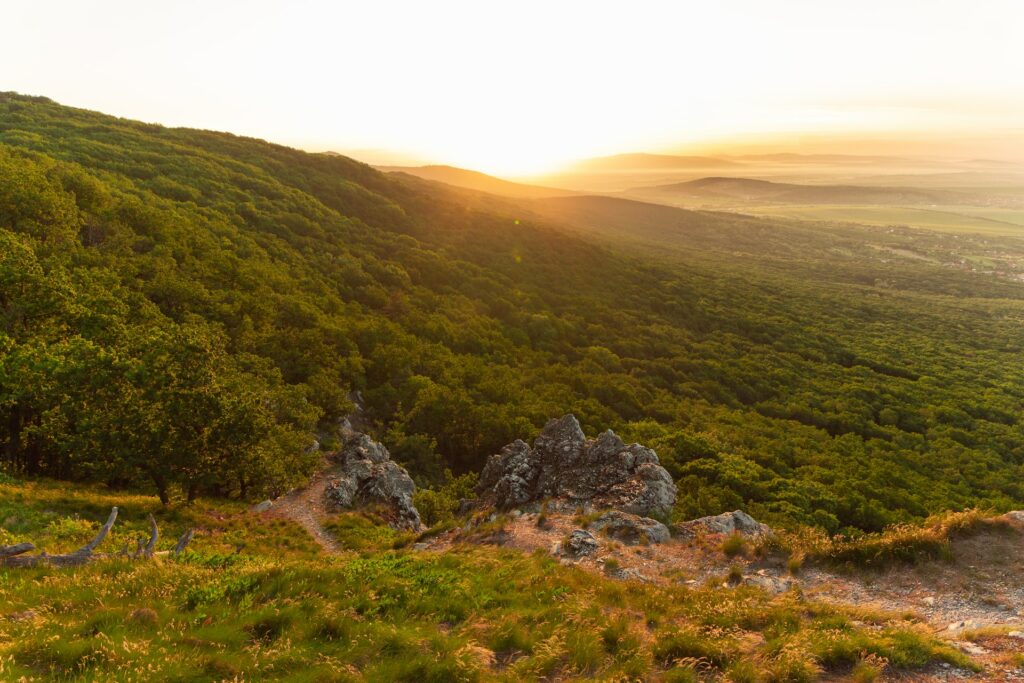
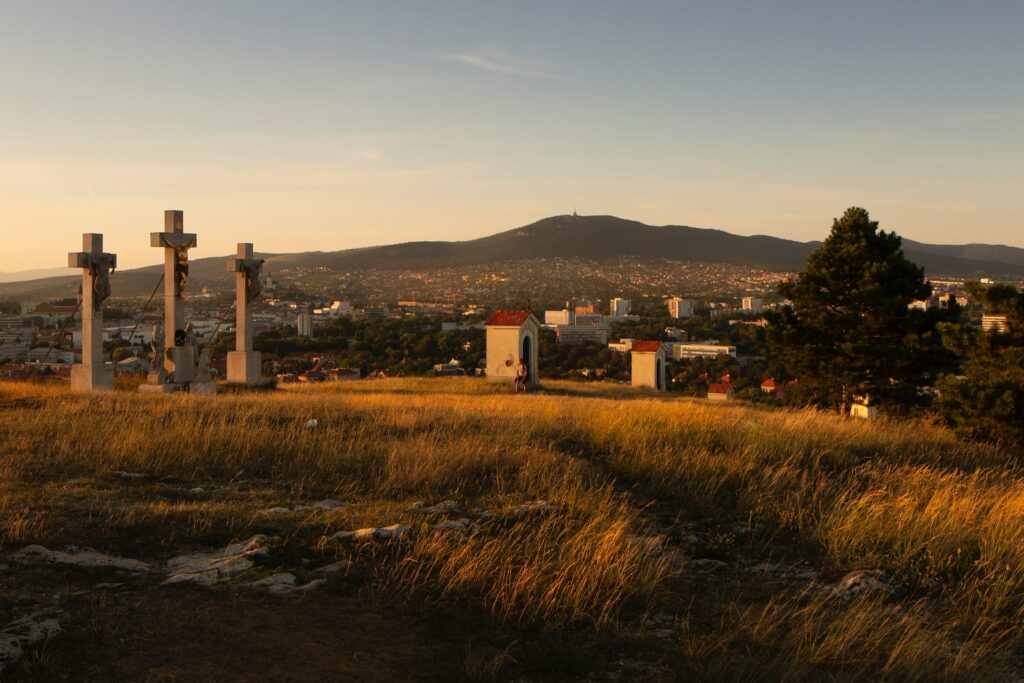
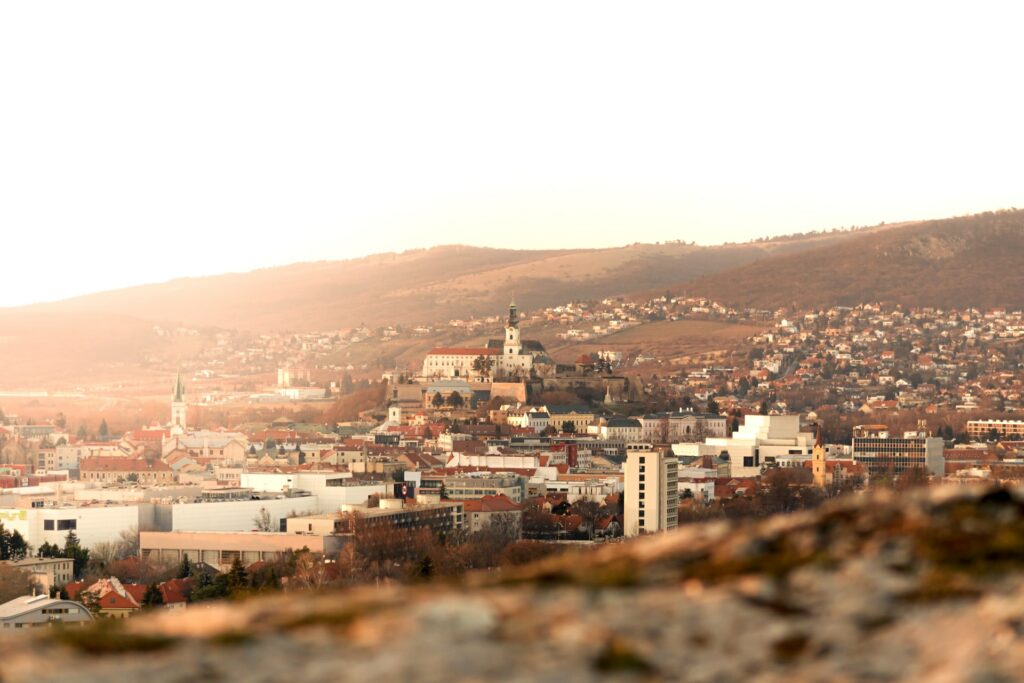
The so-called Upper Town has long developed in close connection with the church. There used to be dwellings of canons and church dignitaries here, but many of them were destroyed by riots in the 16th and 17th centuries. Nevertheless, here you can find important historical buildings, such as the Church of St. Peter and Paul, the Small and Large Seminary, and the Klyuchsky Palace.
Church monuments are also located in the so-called Lower Town. It is here that the Baroque complex with the Church of St. Ladislaus, the Mariana Column, as well as one of the oldest synagogues in Slovakia is located. It was built in 1911 on a square floor designed by Leopold Baumhorn.
Interesting buildings in Nitra include the Gothic-Baroque Basilica of St. Jimram, the Chapel of St. Michael, and the Art Nouveau Palace of Justice. In the city center, you can relax in a beautiful city park on the site of the original riverbed. Its twenty hectares are divided into three parts, the oldest of which dates back to the middle of the 19th century.
Trencin
Trencin is one of the oldest Slovak cities with a population of about 55,000 people. The Vag River flows through the city, over which the landmark, Trenchinsky Castle, was built. According to archaeological finds, the rocky ridge above the Vag River has been inhabited since prehistoric times. Roman legionaries also settled here and founded the Laugarisio military camp, which is the northernmost evidence of the expansion of Marcus Aurelius in Central Europe. Their presence is evidenced by an inscription carved on the rock dedicated to the victory over the Quads in 179. It can be seen from the hotel in the city center in a glass niche.
However, the first written mention of Trenchinsky Castle dates back to 1111. This dominance of Trenchina and the whole region grew up on the ancient trade route from the Mediterranean Sea to the Baltic States, and during the Great Moravia, there was a fortified settlement here, which served as the administrative center of a large part of Europe.
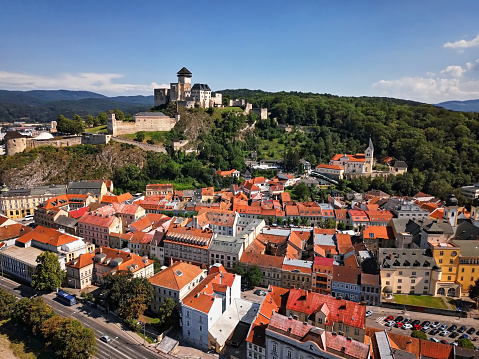
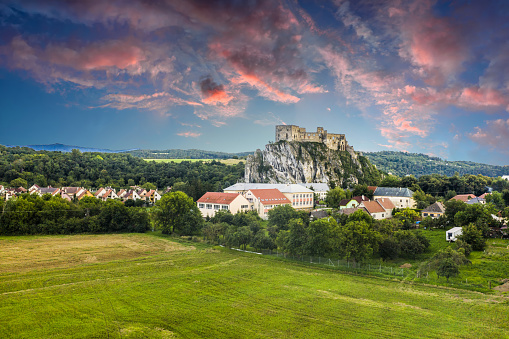
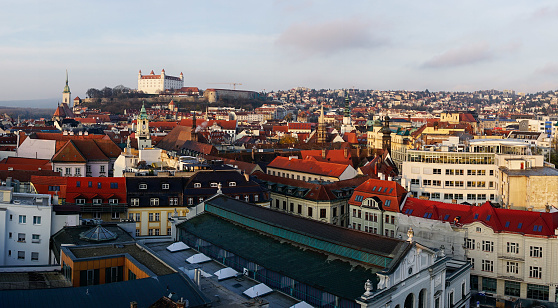
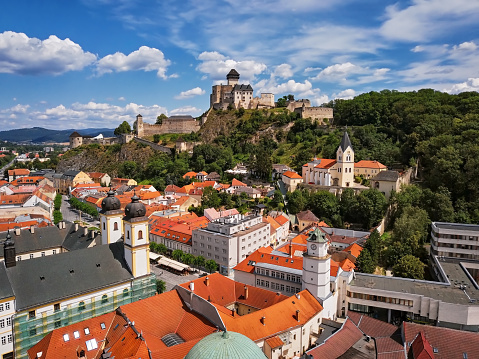
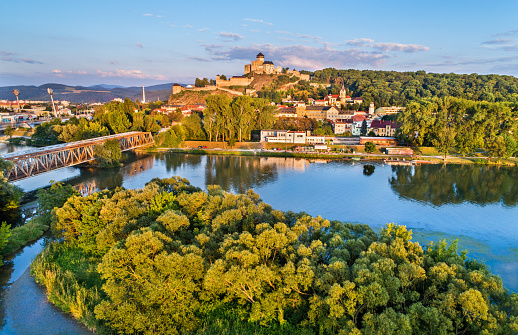
The foundation of today’s castle dates back to the 11th century, although its appearance was greatly affected by a fire in 1790, after which a large-scale reconstruction was carried out. Today, the Trenchinsky Museum is located on its premises, and during the tour, you can see, for example, the 80-meter-deep Well of Love, symbolizing the legendary feeling of Omar and Fatima. In summer, the castle hosts festivals, concerts, medieval games, and night excursions.
The city, which grew up under the castle, was transformed in 1412 by Sigismund of Luxembourg into a free royal city, which retained many privileges and rights. Visitors can see a monastery and a piarist church in the early Baroque style of the 17th century, a fountain with a statue of a water man, and a Jewish synagogue of the early 20th century. It is also worth visiting the plague column with a sculpture of the Holy Trinity, which recalls the plague that struck Trenchin in 1710. Between the castle and the town is the Mariana Mountain with a Roman Catholic church, parish buildings, and a covered staircase from 1568, called the Parish Staircase.
Trnava
Trnava is an ancient Slovak city located in the center of the lower Volga region, less than fifty kilometers northeast of Bratislava. Little Slovak Rome, as Trnava is often called, was created by merging two municipalities. One of them grew up at the end of the IX century in a market that took place once a week at the crossroads of trade routes, and the other near the Trnavka River.
The importance of the village grew rapidly, and in 1238 the Hungarian King Bela IV granted Trnava the status of a free royal city as the first city in Slovakia. In the same century, a unique fortification was built here with thirty-five prismatic towers connected by a wooden shaft. Although the wood was gradually replaced with brick, and the walls reached a height of ten meters. And a width of two meters, they did not prevent the Hussites from conquering the city between 1418 and 1425.
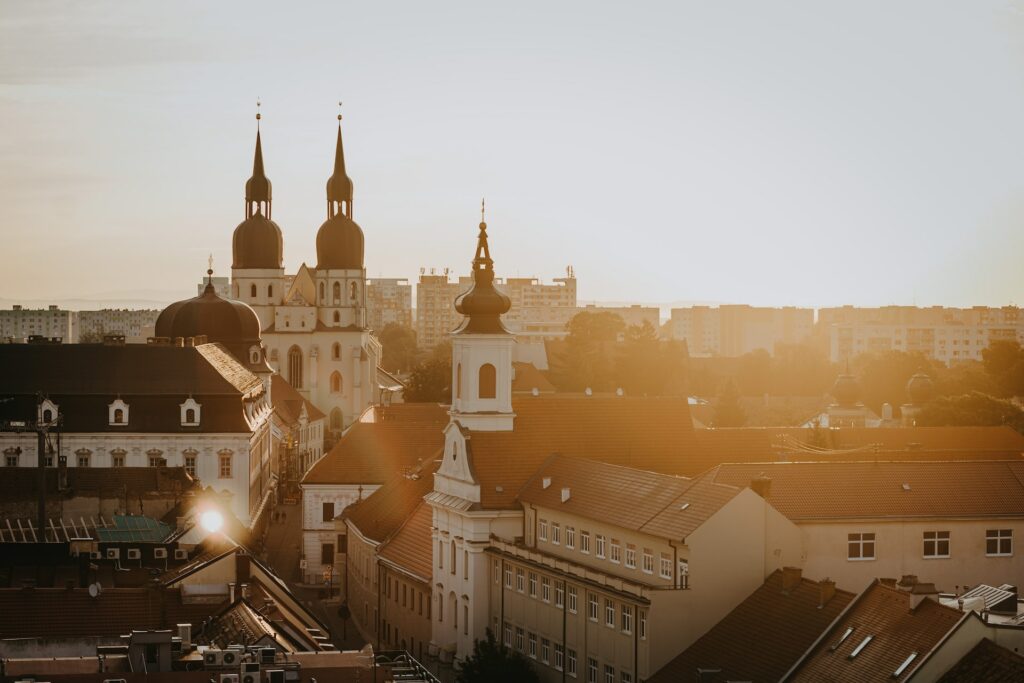
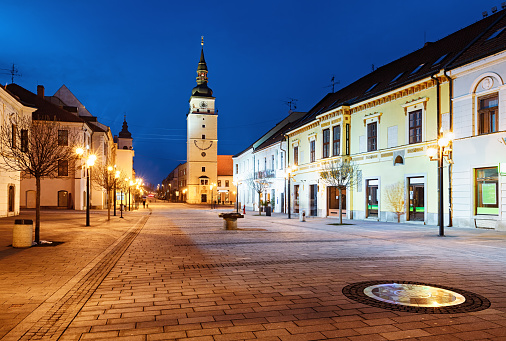
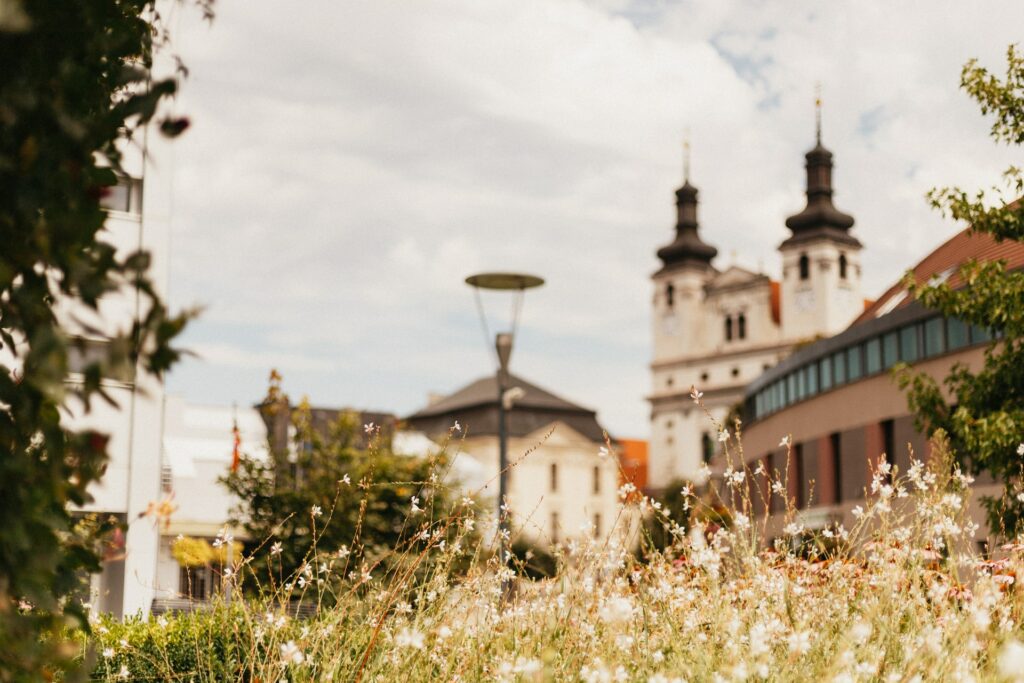
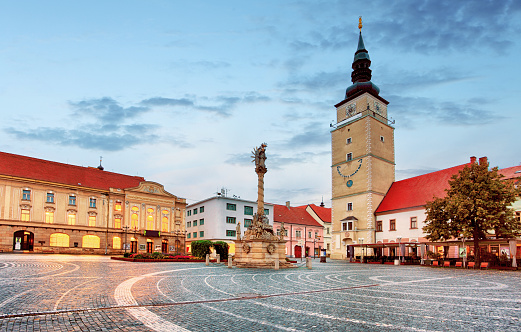
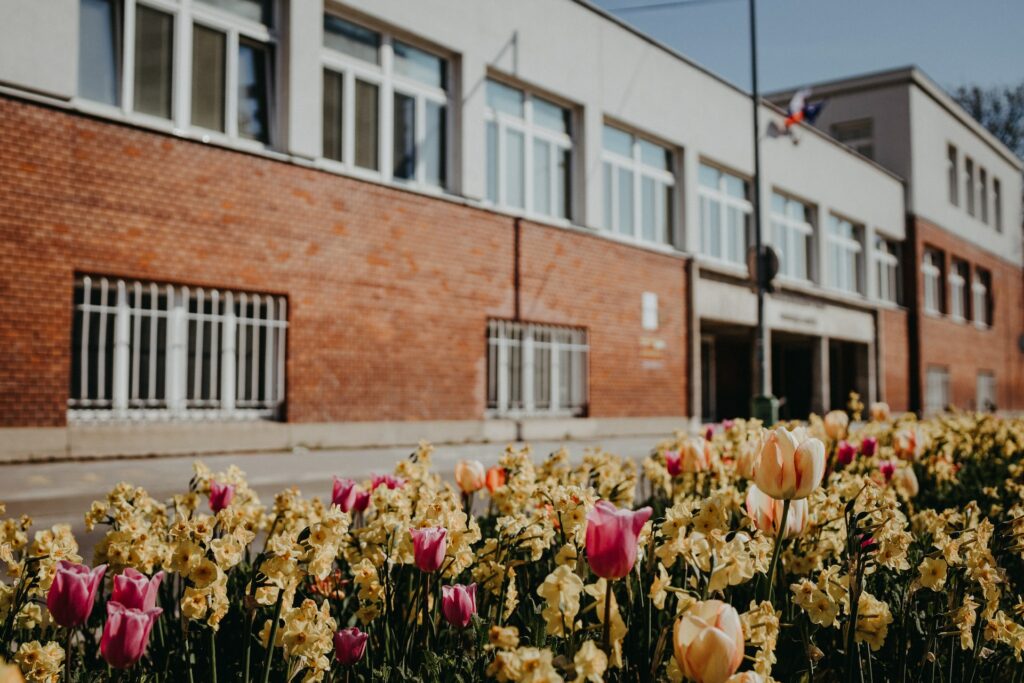
The greatest expansion of Trnava occurred in the 16th century after the Turks occupied Esztergom in 1543, and the local bishop moved here. Thus, Trnava became the ecclesiastical center of Hungary for almost three hundred years. The city acquired such importance that in 1635 Peter Pazman founded the first university in Hungary. In addition to the unique fortifications, several other historical buildings have been preserved in the city. The city tower of 1574 rises above them, with a wonderful view from the observation deck.
The first Baroque building in Slovakia was St. John the Baptist Cathedral. There is a beautiful wooden altar from 1640. It is also worth visiting the three-nave Basilica of St. Nicholas. Which served as the cathedral of the Bishop of Esztergom. In her chapel, you can see a rare miraculous image of the Virgin Mary. The recreation area, Trnava Rybniki is also partially located in Trnava. On its territory exceeding 38 hectares, 150 species of rare birds can be found.
Terchova
Terhova is a village in Slovakia, located near Zhilina, the tourist center of the Mala Fatra Mountains. The legendary bandit Yurai Yanoshik was born in the village. In 2010, a resident accidentally discovered a bronze axe in Terkhov. Thanks to which one can expect the settlement of this place since the Middle Ages. However, the charter of the village dates back to April 22, 1580. And is associated with the so-called Wallachian colonization. During which Wallachian shepherd tribes migrated from modern southern Romania along the Carpathian Arc to the west.
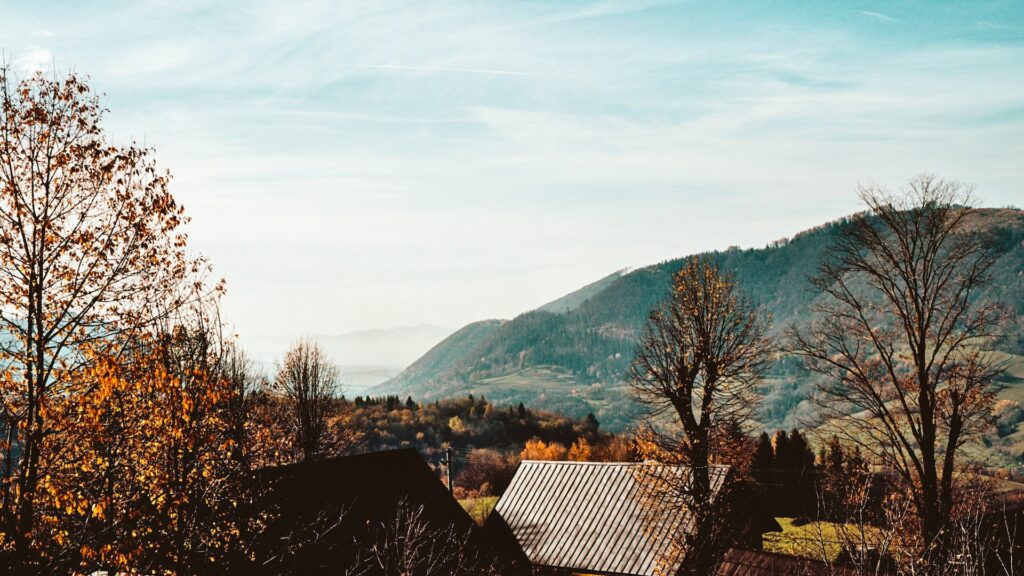
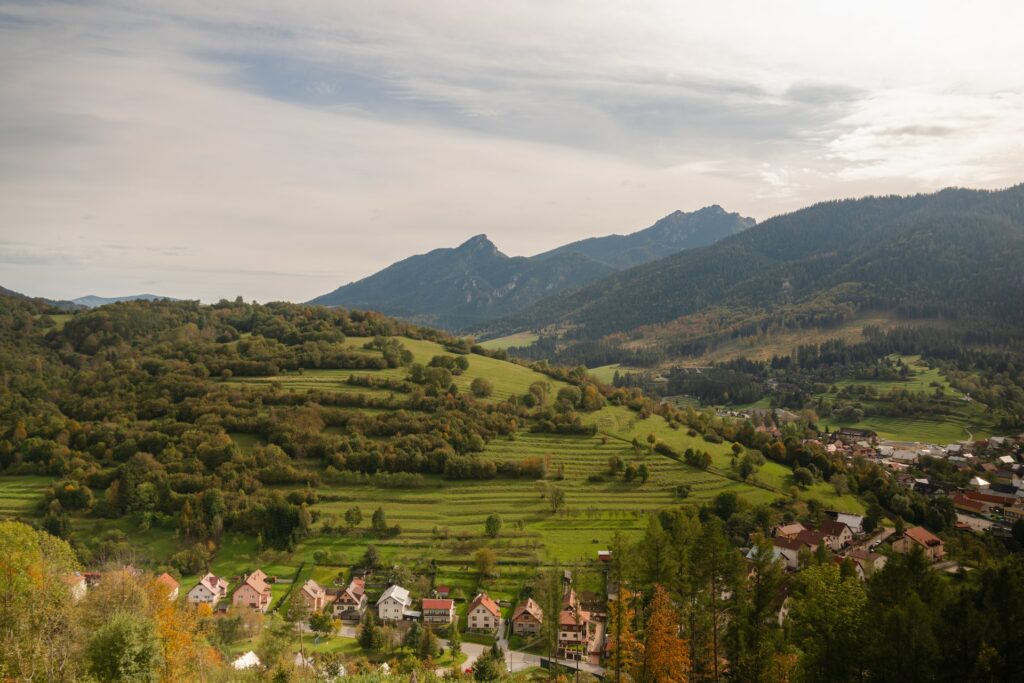
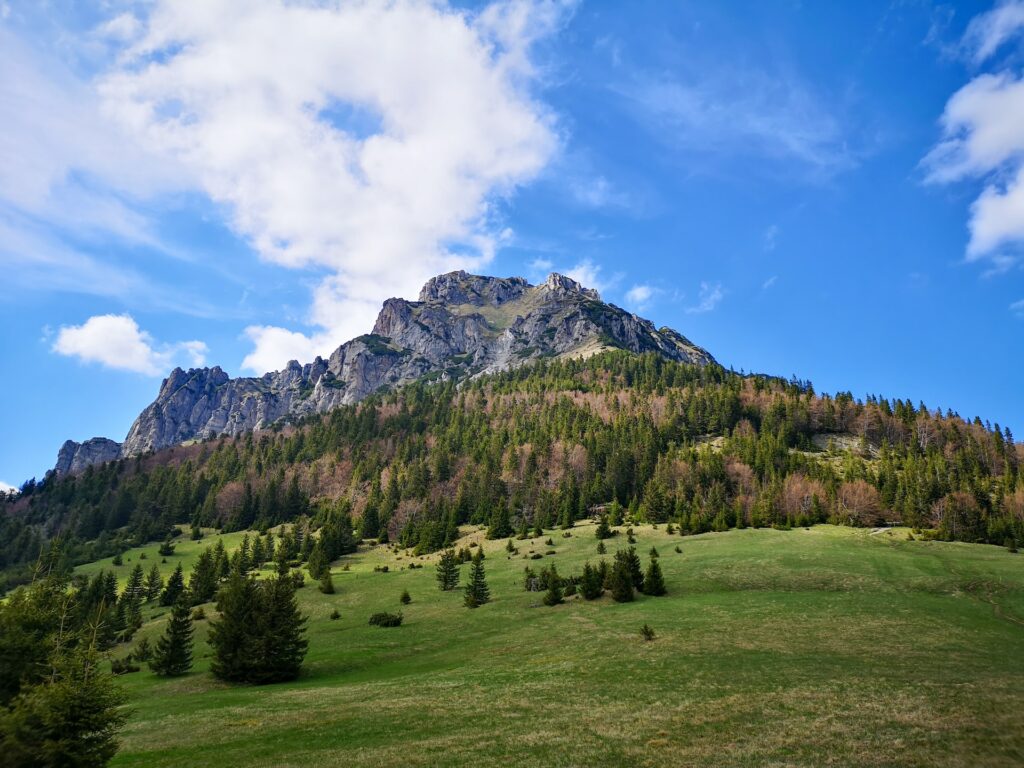
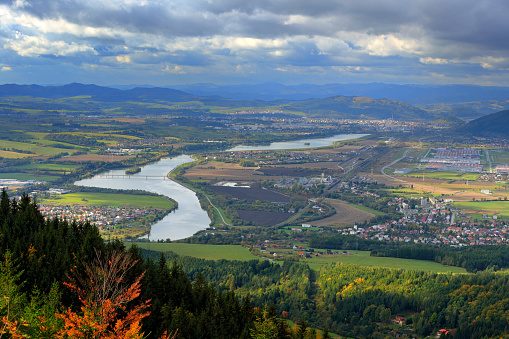
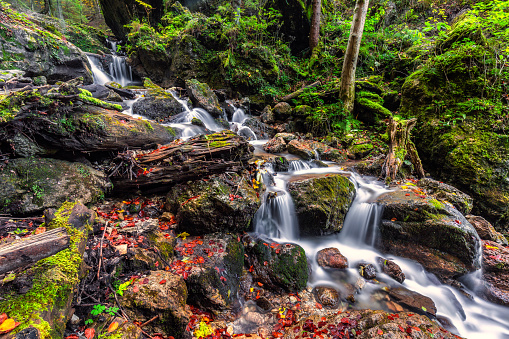
The promising development of the village was interrupted in the middle of the 19th century. When many of its inhabitants died as a result of a plague epidemic. And others left the village due to a prolonged drought. Another blow fell on the liberation during the Second World War when half of the wooden buildings burned down. The Turks tower over the church dedicated to Saints Cyril and Methodius. It was built in October 1945 on the site of the older St. Mark’s Tabernacle of 1731. This is the largest church dedicated to this pair of saints. Since 1990 the so-called Cyril and Methodius Days have been held here. In front of him, you can see a unique mobile nativity scene made by local craftsmen.
Even at the beginning of the XIX century, only herbalists, loggers, shepherds. And treasure hunters who came here to Velki Rozsutets knew the Terkhovsky region. However, after that, the first tourists arrived, whose number increased due to the opening of the Kosice-Bogumin railway in 1871. And twelve years later, the Povazhskaya railway line. In the period between the World Wars, several tourist sites grew up here. Today, visitors to Terkhov come here mainly for the sake of charming landscapes surrounded by many legends and myths. They are also attracted by a local native, bandit captain Yurai Janoshik. After whom the festival of folk art “Days of Janoshik”. Which has been held here every summer since 1962, is named. Also worth a visit is the Juraj Janosik Museum, which opened in 2008.










